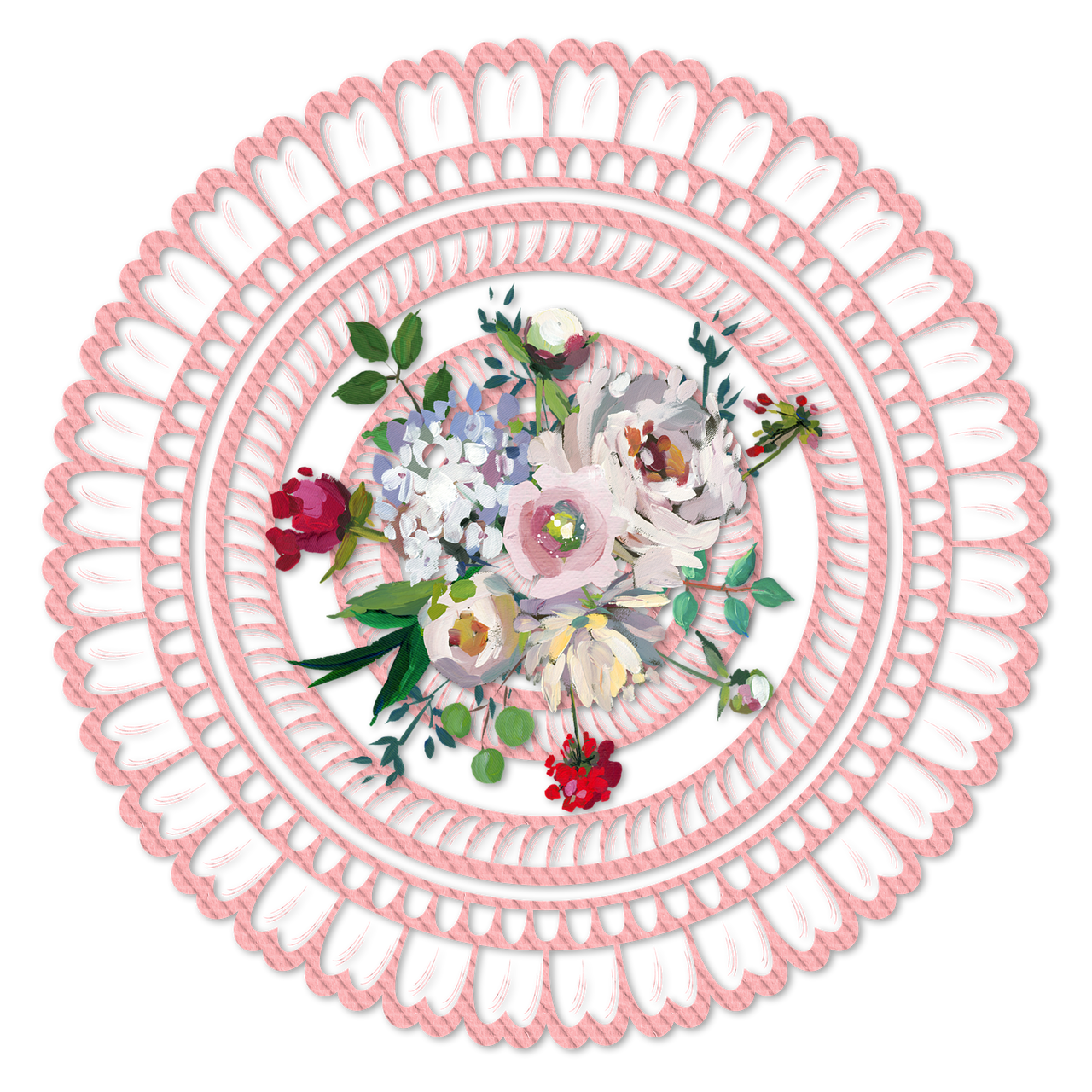Embroidering a rose design on fabric can be a fun and rewarding project that allows you to create a beautiful and vibrant floral motif. In this article, we will guide you through the step-by-step process of embroidering a rose, from choosing the right materials to creating intricate details. By the end, you will have the knowledge and skills to create a realistic and stunning embroidered rose.
To start, it is important to choose the right materials for your embroidery project. Select a fabric that is suitable for embroidery, such as cotton or linen, as these materials are easy to work with and provide a good base for your design. Consider the color and texture of the fabric, as it can greatly enhance the overall look of your embroidered rose.
Next, you will need to choose the right thread for your rose design. Opt for embroidery floss or stranded cotton, as they are versatile and come in a wide range of colors. Consider the color of the rose petals and leaves you want to create, and select thread colors that closely match or complement them.
Now that you have your materials ready, it’s time to start embroidering your rose. Begin by creating the outline of the rose on your fabric. You can use techniques like backstitch or stem stitch to define the shape and contours of the flower petals and leaves. This will give your rose a solid foundation and make it easier to add details later on.
Once the outline is complete, you can start adding dimension to your rose using satin stitch. Satin stitch is a versatile stitch that can create smooth and glossy surfaces, perfect for mimicking the softness and delicacy of real rose petals. Fill in the petals and leaves with satin stitch, working carefully to create a realistic and vibrant effect.
To enhance the realism of your embroidered rose, you can blend different shades of thread. This technique allows you to capture the subtle color variations found in natural roses. Experiment with blending different colors together to create a more lifelike appearance in your design.
Lastly, don’t forget to add intricate details to your rose using French knots. French knots can be used to create the stamen, tiny buds, and other small details that bring your embroidered rose to life. Take your time with these details, as they can greatly enhance the overall look and make your rose design more realistic.
Once you have finished embroidering your rose, you can choose various ways to display it. You can frame it in a hoop or mount it on a canvas to showcase your beautiful creation. Remember to properly care for your finished piece to ensure its longevity.
Embroidering a rose is a creative and enjoyable process that allows you to express your artistic skills. By following these step-by-step instructions and using the right materials and stitches, you can create a realistic and vibrant embroidered rose that will impress everyone who sees it.
Choosing the Right Fabric and Thread
When it comes to choosing the right fabric and thread for embroidering a rose design, there are several factors to consider. The fabric you choose will greatly impact the overall look and feel of your embroidered rose. It’s important to select a fabric that is suitable for embroidery and can withstand the stitching process without stretching or distorting.
One popular choice for embroidering roses is cotton fabric, as it is durable, easy to work with, and comes in a variety of colors and textures. Cotton blends and linen are also great options, providing a slightly different look and feel to your finished piece. It’s important to choose a fabric that complements the colors of your rose design, ensuring that the embroidery stands out and catches the eye.
When it comes to thread, there are numerous options available. Embroidery floss is a popular choice, as it is versatile and comes in a wide range of colors. It is made up of six strands that can be separated or used together to create different effects. Silk thread is another option, known for its lustrous appearance and smooth texture. Metallic threads can add a touch of sparkle to your embroidered rose, while variegated threads can create interesting color variations.
In addition to color and texture, it’s also important to consider the durability of the thread. You want your embroidered rose to last, so choose a thread that is strong and resistant to fraying. Take into account the thickness of the thread as well, as thicker threads can create bolder and more prominent stitches, while thinner threads can create delicate and intricate details.
By carefully considering factors such as color, texture, and durability, you can ensure that you choose the right fabric and thread for embroidering a rose design. This will result in a successful and visually appealing finished piece that captures the beauty of a real rose.
Creating the Rose Outline
Embroidering the outline of a rose is an essential step in bringing your floral design to life. With the right techniques, you can define the shape and contours of the flower petals and leaves, adding depth and dimension to your embroidery.
To create the rose outline, you have a couple of stitching options: backstitch and stem stitch. Both techniques are commonly used in embroidery and offer different effects. The backstitch creates a solid and bold outline, while the stem stitch gives a more delicate and flowing line.
If you prefer a precise and defined outline, the backstitch is the way to go. Start by bringing the needle up from the back of the fabric at the starting point of the outline. Then, insert the needle back into the fabric a short distance away, creating a small stitch. Bring the needle up again at the end of the stitch, aligning it with the previous stitch, and repeat the process until you complete the outline.
On the other hand, if you want a softer and more organic look, the stem stitch is a great choice. Begin by bringing the needle up from the back of the fabric at the starting point. Then, insert the needle back into the fabric slightly ahead of the starting point, forming a small diagonal stitch. As you bring the needle up again, insert it back into the fabric at a point halfway between the previous stitch and the starting point. Continue this process, creating a chain-like effect, until you finish the outline.
Remember to adjust the tension of your stitches to achieve the desired effect. Experiment with both techniques to see which one suits your style and the overall look you want to achieve for your embroidered rose.
Adding Dimension with Satin Stitch
The satin stitch is a versatile embroidery technique that can add depth and dimension to your embroidered rose. By using this stitch, you can create a smooth and glossy surface that beautifully mimics the softness and delicacy of real petals. Here’s how you can add dimension to your embroidered rose with satin stitch:
- Start by outlining the shape of your rose using a backstitch or stem stitch. This will serve as a guide for your satin stitches.
- Select a thread color that closely matches the color of your rose petals. Satin stitch works best when using a single strand of embroidery floss.
- Bring your needle up from the back of the fabric at one end of the petal and insert it back down at the other end, creating a straight stitch.
- Repeat this process, working row by row, until the entire petal is filled with satin stitches. Make sure to keep your stitches close together for a smooth and even surface.
- To add depth and dimension, you can use different shades of thread for shading and highlighting. For example, you can use a slightly darker shade of thread for the inner parts of the petals and a lighter shade for the outer edges.
- Continue filling in each petal with satin stitches, paying attention to the natural curves and contours of the rose. This will create a realistic three-dimensional effect.
Remember to take your time and practice your satin stitching technique to achieve the desired effect. With patience and precision, you can create a stunning embroidered rose that captures the beauty and elegance of real petals.
Blending Colors for Realistic Effects
Blending colors is an essential technique for creating a realistic and lifelike embroidered rose. By using different shades of thread, you can capture the subtle color variations found in nature and bring your design to life. Here are some techniques to help you achieve this:
- Color Selection: Start by selecting a range of thread colors that closely resemble the colors of a real rose. Consider the different hues and tones that make up the petals and leaves.
- Gradual Transition: Begin by stitching with the lightest shade of thread and gradually transition to darker shades. This will create a smooth and natural blending effect.
- Layering: Layering different shades of thread can add depth and dimension to your embroidered rose. Start with a base color and then add lighter or darker shades on top to create highlights and shadows.
- Experimentation: Don’t be afraid to experiment with different color combinations. Mix and match shades to create unique effects and find the perfect blend for your embroidered rose.
Remember to step back and assess your work as you go along. Take breaks if needed to ensure you’re achieving the desired realistic effect. Blending colors requires patience and practice, but the end result will be a beautifully vibrant and lifelike embroidered rose.
Enhancing Details with French Knots
French knots are a fantastic embroidery technique that can elevate your rose design to a whole new level of intricacy and beauty. By learning how to create French knots, you can add delicate and realistic details to your embroidered rose, such as the stamen and tiny buds. These small knots create a three-dimensional effect, making your design come alive.
To create a French knot, start by bringing the needle up through the fabric at the desired location for your detail. Hold the thread taut with your non-dominant hand, and then wrap the thread around the needle two or three times, depending on the desired size of the knot. Insert the needle back into the fabric close to where it came up, making sure to hold the thread securely. Gently pull the needle through the fabric, allowing the wraps to tighten and form a knot.
French knots can be used to embellish the center of the rose, representing the stamen, or to add tiny buds along the stem. Experiment with different thread colors and knot sizes to achieve the desired effect. Remember to space the knots evenly and strategically to create a balanced and visually appealing design.
By incorporating French knots into your embroidered rose, you can add an extra level of detail and sophistication, making your design truly stand out. These intricate knots bring a sense of realism and depth to the flower, capturing the essence of a real rose in your embroidery. So, don’t be afraid to experiment with French knots and let your creativity flourish!
Finishing Touches and Display Options
When it comes to finishing touches and display options for your embroidered rose, there are several creative ways to showcase your beautiful piece of art. One option is to frame it in a hoop, which not only provides a neat and finished look but also allows you to easily hang it on a wall or display it on a shelf. You can choose a hoop size that complements the size of your embroidered rose, ensuring that it is the focal point of the frame.
Another option is to mount your embroidered rose on a canvas. This gives it a more professional and polished appearance, and you can even add additional embellishments or background elements to enhance the overall design. Mounting on a canvas also provides a sturdier base, making it easier to transport or hang your artwork.
When it comes to caring for your finished piece, it’s important to handle it with care to avoid any damage or fraying of the threads. Avoid hanging your embroidered rose in direct sunlight or in areas with high humidity, as this can cause fading or discoloration over time. If necessary, you can gently dust the surface of the embroidery with a soft brush to keep it looking fresh.
To display your embroidered rose, consider the overall aesthetic of the room or space where you plan to showcase it. You can hang it on a wall, place it on a mantel or shelf, or even incorporate it into a larger art installation. The possibilities are endless, so let your creativity guide you in finding the perfect spot to display your stunning embroidered rose.
Frequently Asked Questions
- Q: What materials do I need to embroider a rose?
- Q: What type of fabric is best for embroidering a rose?
- Q: What stitches should I use to create the rose outline?
- Q: How can I add dimension to my embroidered rose?
- Q: How can I achieve realistic color effects in my embroidered rose?
- Q: How can I add intricate details to my embroidered rose?
- Q: How should I finish and display my embroidered rose?
A: To embroider a rose, you will need fabric, embroidery thread, embroidery hoop, embroidery needles, embroidery scissors, and a rose design pattern.
A: It is recommended to use a medium-weight fabric such as cotton or linen for embroidering a rose. These fabrics provide a stable base for the embroidery stitches and allow the design to stand out.
A: You can use backstitch or stem stitch to create the outline of a rose. These stitches are commonly used in embroidery and provide a clear and defined shape for the petals and leaves.
A: Satin stitch is a great technique to add dimension to your embroidered rose. By using this stitch, you can create a smooth and glossy surface that gives a realistic appearance to the petals.
A: Blending different shades of thread is the key to achieving realistic color effects in your embroidered rose. By carefully selecting and blending the colors, you can capture the subtle variations found in real roses.
A: French knots are perfect for adding intricate details to your embroidered rose. You can use them to create the stamen and tiny buds, giving your design a finishing touch that brings it to life.
A: There are various ways to finish your embroidered rose, such as framing it in a hoop or mounting it on a canvas. Choose a method that suits your preference and properly care for your finished piece to ensure its longevity.


